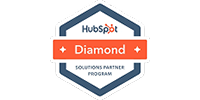Why 2022 Is All About Diversifying Your Demand Generation
At FullFunnel, we often offer revenue operations consulting services to organizations that rely solely on one channel to generate demand, whether that is paid search, teleprospecting, referrals, trade shows, their VP of Sales’ network, or any number of others. When these channels are performing well, organizations keep spending, as they should, but often at the expense of experimentation and expansion into other channels. Upon working with hundreds of these organizations, we’ve consistently found that over-reliance on a single platform, network, or approach, exposes the business to risk in the long term.
In this blog, we break down why 2022 should be the year of experimentation and channel expansion for your business.
There Is No Perfect Channel
There is no perfect channel in the world of demand generation. Every approach comes with its set of advantages and disadvantages, and only by mixing these channels together and understanding their costs in relation to your goals can you achieve the predictable customer generation you’re looking for.
Many organizations rely solely on paid search for their demand generation because of the platform’s ability to leverage intent data to put your ads in front of audiences actively searching for a solution. Unfortunately, by relying on paid search too heavily, you don’t have the opportunity to select the organizations you want to work with. You’ve got to work with what’s coming in, and those prospects aren’t always going to be your dream clientele. Digital paid advertising is often an auction-driven fee, meaning that if more companies are bidding on your keyword in Google Ads, your cost to acquire your customer will increase and you will still be reliant on that increased fee for your sole source of customers.
Outbound sales is often more expensive to start than paid advertising and can be slower and more labor-intensive. But it also allows you to target specific organizations that you want to work with and that represent a higher deal value. Outbound sales requires meticulous measurement and experimentation to start, but can lead to a channel where you control the inputs and outputs instead of the digital ads auction determining your fate.
Over-reliance on a single channel limits your organization’s potential to bring in the customers you want vs. the customers that show up. Your prospects almost always can be reached through multiple mediums, and it’s at least worth a try to understand if the return on investment from these channels are in line with the ROI your company needs from your sales and marketing efforts.
Changing Tides
If the COVID-19 pandemic has taught us anything, it’s not to become too comfortable with the status quo. Many organizations struggled tremendously at the beginning of the pandemic because of their complete or over-reliance on outside sales as a demand generation engine, which suddenly became inaccessible. Organizations that relied heavily on teleprospecting also took a hit when professionals stopped picking up office phones. Having to pivot on a dime is hard, especially when you have no experience across other channels.
Even without these exogenous shocks, you can expect consumer behaviors to shift every couple of years. Sales tactics that were once table stakes are now considered dated if not obsolete, yet many organizations are still investing in channels that worked in the good old days.
Having a differentiated approach to demand generation from the get-go means that at the very least, you have familiarity with a wide breadth of platforms and are prepared to pivot in the future, instead of having to play catchup to those who were exploring their options the entire time.
Hedging Risk
No matter what channel you favor, you are exposed to some element of risk. If paid advertising is your sole demand generation engine, rising cost per click will dramatically impact your sales funnel. If outbound sales is your go-to, rising labor costs or tough labor markets will almost certainly dampen your efforts.
Diversification is about hedging these risks and maintaining as much control as possible in your demand generation process. A bad month for a sales rep shouldn’t mean a bad month for your entire organization. Rising costs per click in Google Ads shouldn’t force your organization to instantly raise prices, because Google shouldn’t be the sole sales engine for your business. A varied demand generation strategy allows you to pivot and re-distribute budget when needed, remaining flexible in an ever-changing market.
* * *
If your organization is struggling to achieve productivity in its demand generation efforts, or is not sure where to begin experimenting, schedule a free consultation to learn more about FullFunnel’s approach and how we’ve built successful demand generation campaigns for hundreds of organizations across the globe.

.png)









